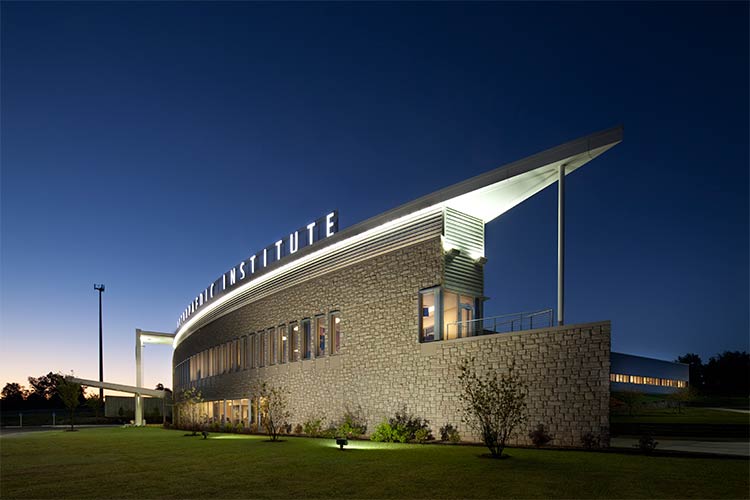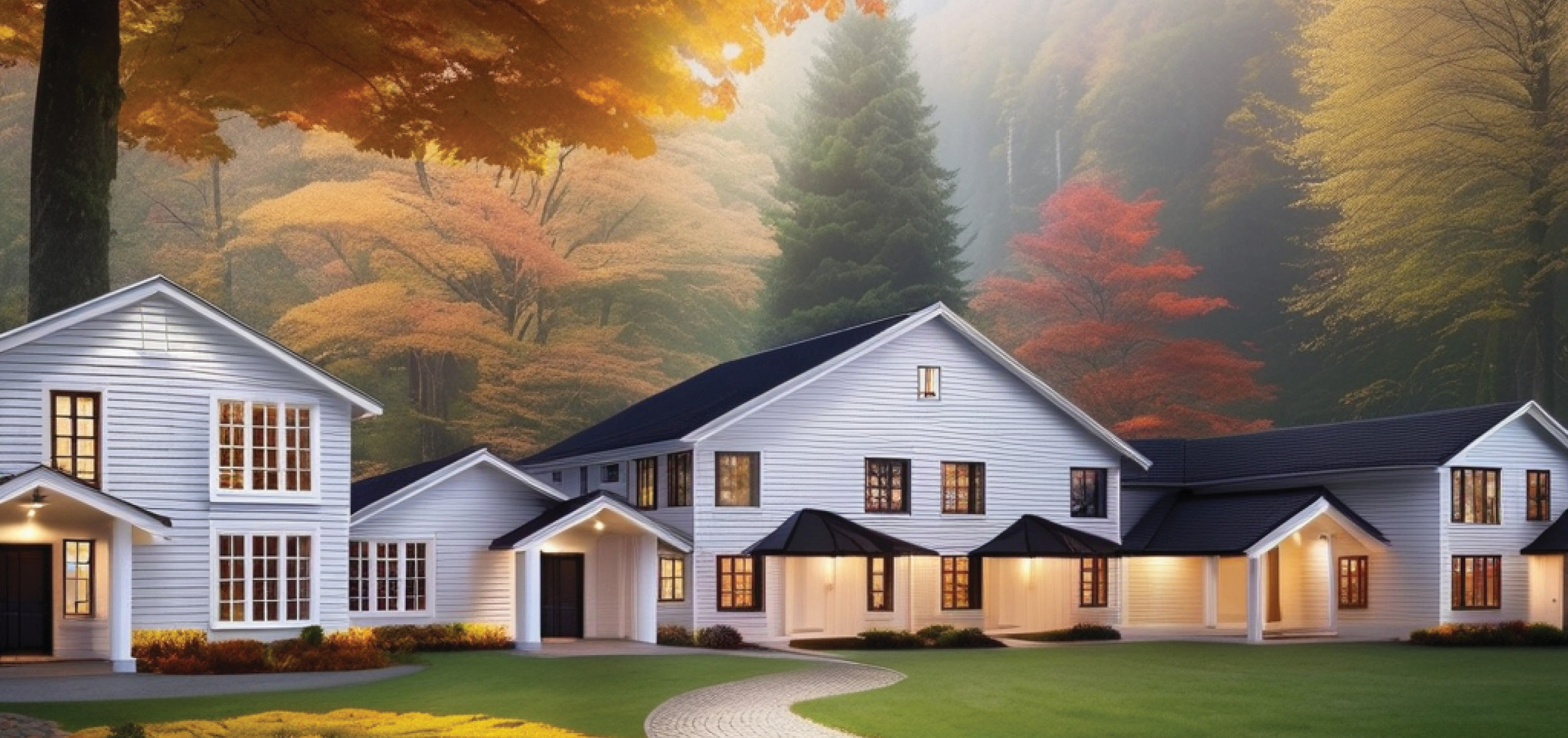By Richard Slayton, RLA, ASLA, AHTA
“Forget not that the earth delights to feel your bare feet and the winds long to play with your hair.”
–Khalil Gibran
Abstract
The benefits of biophilia have been researched and documented for decades. Erich Fromm originally used the word, in The Anatomy of Human Destructiveness (1973), to represent the “passionate love of life and all that is alive.” In Biophilia (1984), Edward O. Wilson expanded on this with the formation of his “biophilia hypothesis,” suggesting that “humans possess an innate tendency to seek connections with nature.” The significance of biophilia was quantified in a landmark study published in Science by Roger Ulrich, “View through a window may influence recovery from surgery” (1984), which also added to the emerging research supporting evidence-based design.
Ulrich’s investigation focused on patient recovery records in a suburban Pennsylvania hospital between 1972 and 1981. Findings indicated that “surgical patients in rooms with windows looking out on a natural scene had shorter post-operative hospital stays, received fewer negative evaluative comments in nurses’ notes, and took fewer potent analgesics than patients in similar rooms with windows facing the brick building wall.”
We view the senior living campus as an opportunity to provide a park-like canvas for social interaction of all ages. In this article, we explore and evaluate opportunities to provide this essential connection with nature through design, to enhance the lives of residents, family members, supporting staff, and the communities that are served.
“All my life through, the new sights of nature made me rejoice like a child.”
–Marie Curie
We Are Wired to Be Outside
Florence Williams is an American journalist and nonfiction author whose work focuses on the environment, health, and science. Her book, The Nature Fix, presents conclusions regarding the effects that nature has on the brain and body. Among her observations is that people are very, very happy when they are outside. The human brain emits more calming alpha waves when listening to bird songs or observing fractal patterns in nature. Additionally, the fragrance of pine trees can strengthen one’s immune system.
Williams’ findings are consistent with the Japanese practice of shinrin yoku (forest bathing), which “refers to the process of soaking up the sights, smells and sounds of a natural setting to promote physiological and psychological health.” A 30-minute walk in the forest can lower blood pressure and cortisol levels.
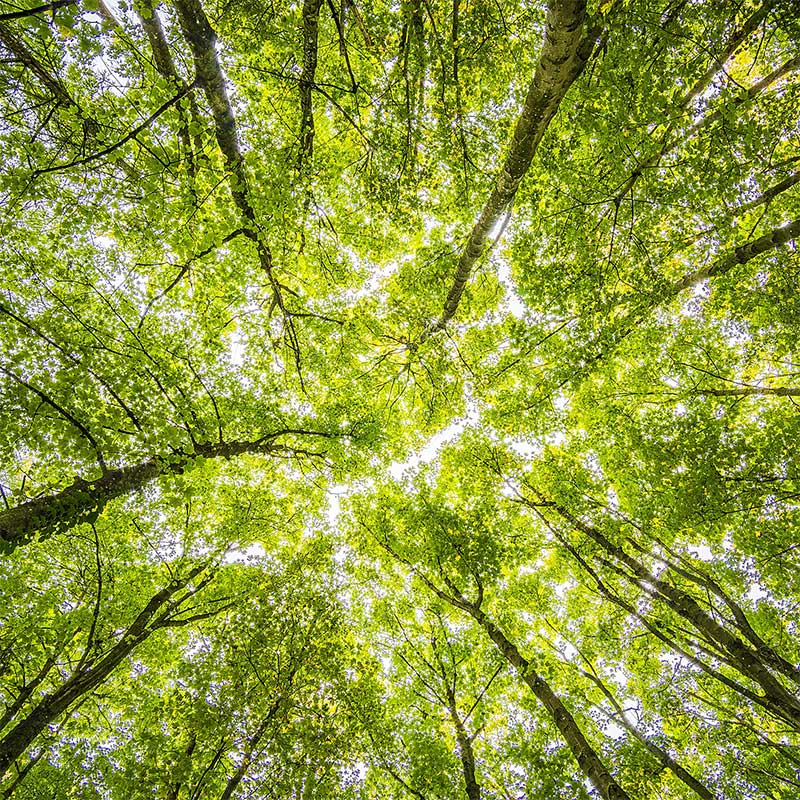
The Entry – A River of Life for the Community
From the moment of arrival, the entire senior living campus presents opportunities to engage staff, residents, and visitors in the stress-reducing benefits and positive influences of nature. Recently, a provider lamented that even the most beautiful courtyard garden in their portfolio, beyond views from adjacent rooms, rarely got much use. In their observations, residents preferred being part of the activity happening at the building entrance. In The Social Life of Small Spaces, William H. Whyte discussed the importance of streets, stating that “The street is the river of life of the city. They come to these places not to escape but to partake of it.”
In our conception of a senior living “city,” the entry drive, porte cochère, and resident building entrance become that river of life. Our task is to create a sequence of events along this symbolic waterway.
- At the headwaters, where the entry drive meets the public right-of-way, what visual cues indicate one’s arrival? Monument signage, stone columns with decorative fencing, distinctive pavement, a landscape feature — the potential for placemaking to enhance a neighborhood, city, or region is significant, and offers an opportunity to establish a landmark for the campus.
- The entry drive layout and design of the roadway cross-section are important functional and aesthetic details to consider. Incorporating a serpentine drive produces an organic experience and frames views to the campus as it meanders, while a linear drive, centered on the building entrance, creates a formal setting. In either scenario, consider the sequence. In addition, a planted median strip can enhance the natural experience while providing enhanced traffic safety.
- Finally, we arrive at our destination, the visitor and resident reception area — in keeping with the waterway theme, the river’s mouth. As noted, this area of focused activity is the preferred setting for social interaction by residents. It is important to design a space that will accommodate simply greeting passersby as well as functions ranging from sharing an al fresco lunch with grandchildren, to activities associated with seasonal community farmers’ markets, and craft and arts fairs.
“There is something infinitely healing in the repeated refrains of nature,
the assurance that dawn comes after night, and spring after winter.”
–Rachel Carson
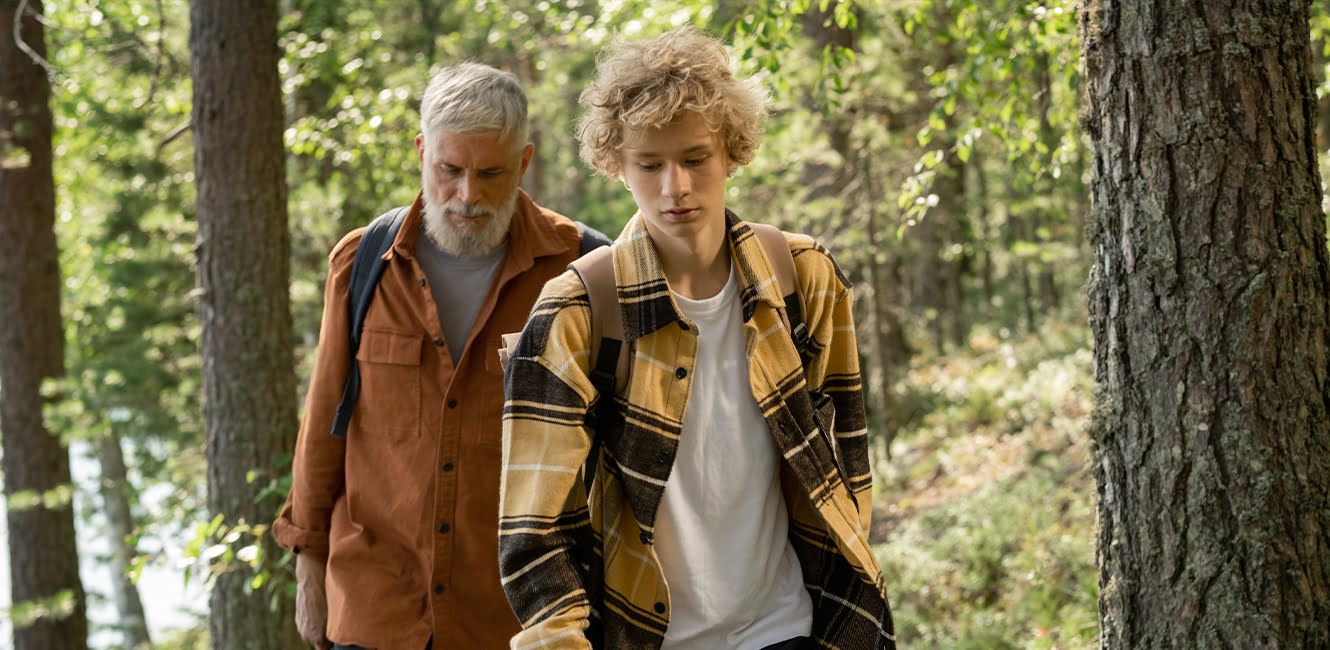
Incorporating Restorative Elements for Healthy Living
Dr. Aimée Taylor, a horticultural therapist in Vancouver, British Columbia, once said, “A healing garden should be accessible to all, have beneficial effects on people using the garden, and provide a place of retreat and respite from daily life.” The term “healing garden” refers to actual features that help us recover from stress. These characteristics, six in all, are easily incorporated into senior living site design.
Flowers. Dr. Jeannette Haviland-Jones, in a behavioral research study conducted at Rutgers University, determined that “The presence of flowers triggers happy emotions, heightens feelings of life satisfaction and affects social behavior in a positive manner far beyond what was previously believed.”
Lush vegetation. Roger Ulrich has found that viewing vegetation changes our brain waves from beta to alpha. Alpha waves are associated with being “wakefully relaxed.” In a lush garden, the plant material should be full, expressing forms and textures unique to the various species. Overly manicured gardens, shaped with electric hedge shears, result in a collection of stifled and deformed plants — the very antithesis of luxuriant foliage. One should limit plant shaping to renewal pruning and removal of dead branches. Selection of forms and textures is the domain of landscape designers working with nature, not maintenance crews.
Spatial openness. We are drawn to landscapes with spatial openness. Like savannas, characterized by scattered trees and grassy understory, design should consider expansiveness.
Calm or slowly moving water. Slowly moving water is intrinsically calming, relaxing, and has been found to enhance concentration. Water also attracts people of all ages, connecting us with every generation. Invite water to be an element of the design with a feature that recycles water along a stream bed, a cascading waterfall, or a simple pouring vessel. Avoid using chemical treatments, letting the movement of the water maintain purity. This will allow safe drinking water for birds and other wildlife.
Large trees. Benefits realized from groupings of large trees was mentioned in our discussion of forest bathing and has been well documented in research articles. Consider, also, the value of a single large tree. A tree provides shade and cools the air; filters urban pollution and fine particulates; absorbs sound; improves water and soil quality, and provides habitat and food for wildlife.
Unthreatening wildlife. Think of the quiet happiness experienced when seeing the first robin of spring, or the positive distraction from your worries while watching a squirrel searching for and storing acorns for the winter, a sparrow gathering twigs to build a nest, or a monarch butterfly feeding on the nectar of milkweed flowers.

“Nature can do without man, but man cannot do without nature.”
–Prentice Bloedel
Designing to Engage the Senses — Walking in the Rain
Childhood memories of splashing through puddles during a midday rainstorm are distinct and typically prompt a feel-good moment. Sailing our oak leaf “boats” along curb gutter waterways, we knew little about the health benefits associated with being in the rain. It was just fun!
Plan for everyone in the community to participate in the emotional and physical benefits of a rainstorm. Mobility issues may restrict access to trails for some, while others may be more interested in the fragrance of rain than the feel. A covered porch, large enough to provide protection from windswept rains and connected to the primary community residence, provides an opportunity for staff, residents, and visitors to share the gifts of a summer cloudburst.
“Let the rain kiss you. Let the rain beat upon your head with silver liquid drops. Let the rain sing you a lullaby.”
–Langston Hughes

The health benefits of walking in the rain are well-researched and documented. Several of the more demonstrable examples include:
- The air is proven to be cleaner and fresher. A raindrop can attract from tens to hundreds of tiny aerosol particles to its surface before hitting the ground.
- The smell of rain is calming. This is known as the Petrichor Effect. It refers to the fragrance experienced when rain hits dry ground.
- Walks in the rain help with acceptance. Functioning as a metaphor for things in life that you do not control, it puts difficulties in perspective: This too shall pass.
- The higher humidity levels associated with a rain event is good for one’s skin and health.
- Listening to the rain reduces one’s stress level, as it muffles less calming sounds.
- Rain provides an emotional and physical connection to our youth, generations over millennia, and living creatures of all species. We are at once made aware of our importance and insignificance in the world and are free to set our problems aside.
Create Accessible Trails for Forest Bathing
A senior living campus must be designed to include accessible trails for recreational and health purposes. Paths should be provided that meet ADA standards with respect to surface treatment and gradient. Additionally, paths must be wide enough to accommodate comfortable two-way pedestrian traffic. Typically, an 8- to 10-foot-wide path is sufficient and provides for maintenance vehicle access. This dimension will also allow space for vegetation to overhang the path. Aesthetically, this vegetation nestles the path in the landscape and enhances the natural experience. The trail system should be measured and include secondary routes of various distances and landscape experiences. Consider segments of the trail traversing a butterfly garden, a pinetum, a meadow, outdoor classrooms and exercise areas, and, of course, woodlands for forest bathing. Note that the recommendations are for pedestrian use only. The stress-reducing benefits of the trail system are compromised with the introduction of bicycles.
Five steps have been identified to prepare for and make the most of a forest-bathing experience.
- No phones or cameras. This is your time to be in nature in the moment.
- Set aside goals, move slowly. You are not here to solve problems or make mental lists of things to do.
- Pause to observe with all senses. Smell the bark, hear the chirp of a bird, taste the air, see the breeze move, touch the sky.
- Sit, listen, and watch. Let nature respond to your stillness.
- If with others, remain silent. Share observations, both physical and emotional, with others after the walk. Stay a few yards behind the group, avoid setting a pace or keeping up. Just be with nature.
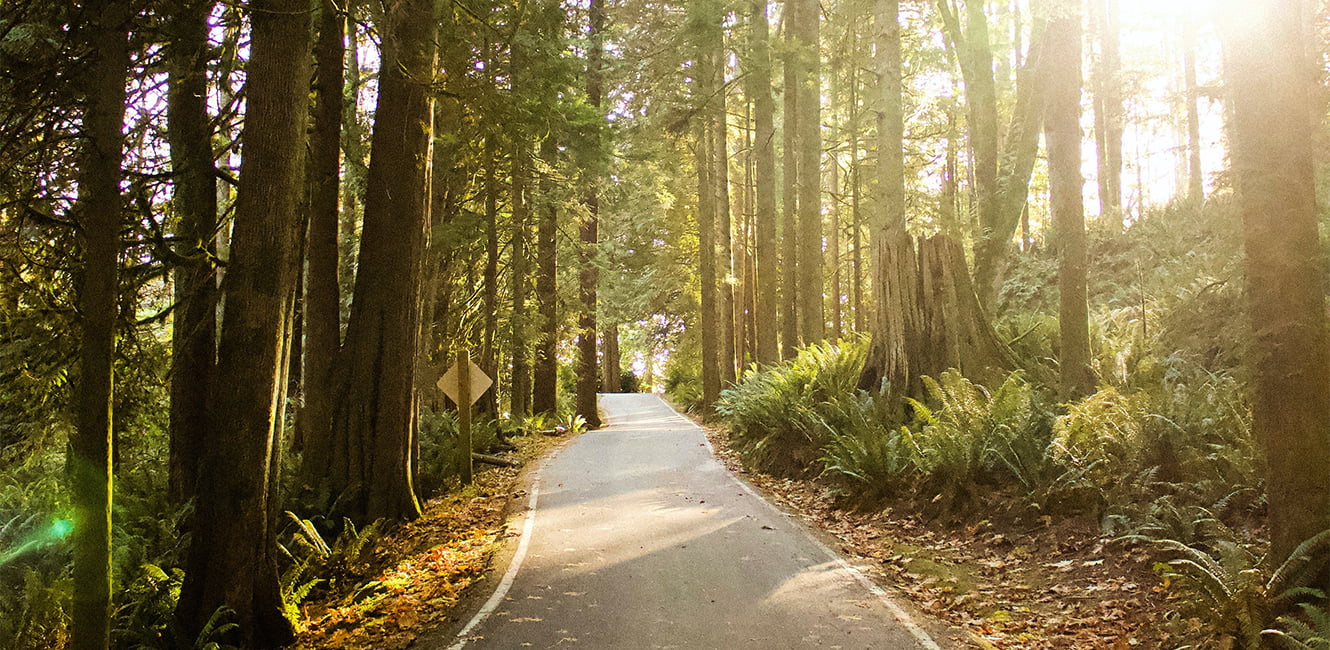
Available real estate associated with a senior living campus is often limited. Land dedicated to forest bathing seems out of the question. However, incorporating land for required setbacks, areas for stormwater management, and landscape buffer zones if properly designed, will provide space for a linear forest bathing experience. There are strategies and physical devices that can assist with transforming a 25-foot-wide setback to a forest bathing-worthy woodland.
Earth forms: Berms created with soil have noise-absorbing qualities. A properly placed and planted berm will create the illusion of greater space, limit traffic noise, and can direct views away from public rights-of-way.
Deciduous tree groupings: Concentrated groupings of deciduous trees can create a fence-like screen of public roadways.
Evergreen plantings: The use of evergreen plantings can increase the perceived density of a woodland. Columnar evergreen trees are especially effective in limited space.
Trail orientation: Trail placement can direct the pedestrian’s view. By aligning the direction of paths away from public corridors, the perception of greater space is achieved.
Detention ponds: Beyond water-storing requirements, detention ponds can provide aesthetic enhancements to the natural experience. The pond shape should suggest the ice age and glacial formations rather than the efficiency of a bulldozer operator. Areas along the pond’s undulating edge can be planted with groupings of trees and shrubs that accentuate the pond shape. Strategically place plant material to contain and expose views as your walk sequences around the pond.
Taking a Break
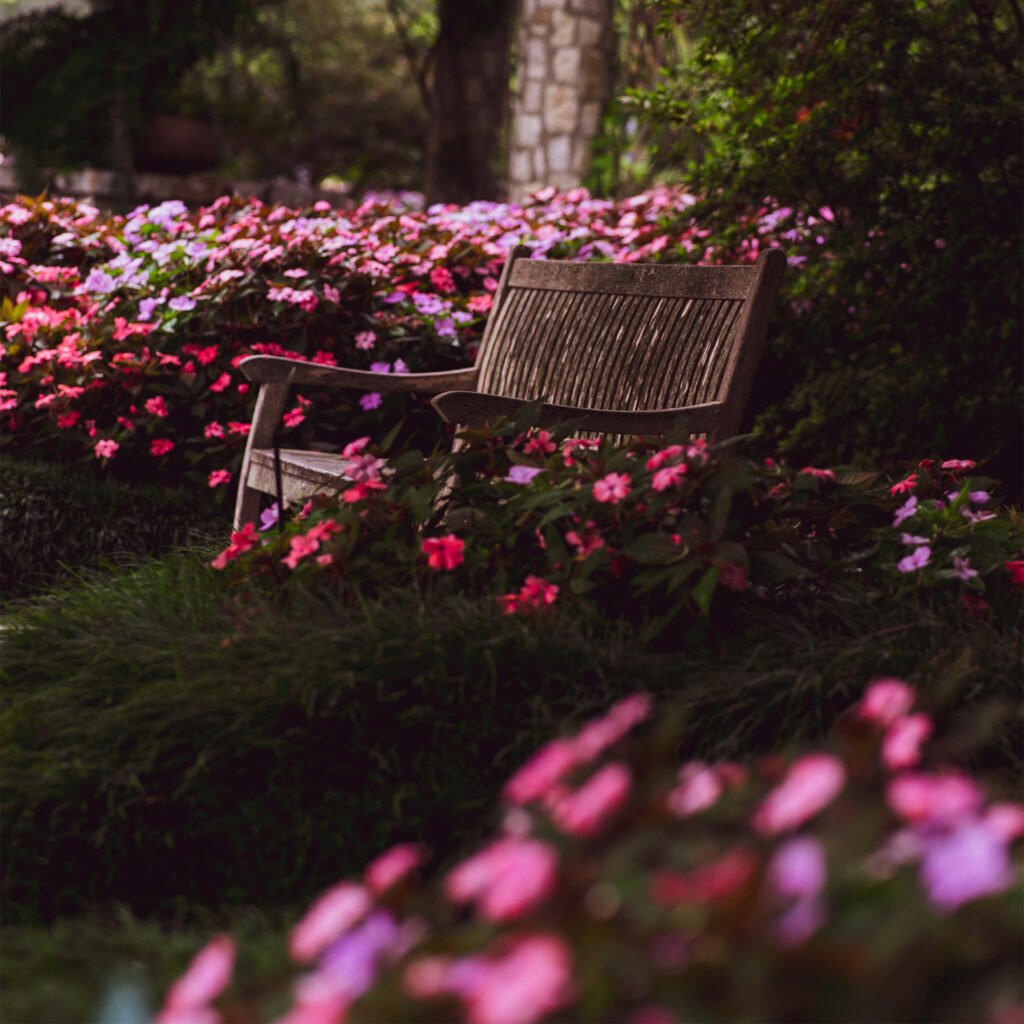
Being an active senior is somewhat open to interpretation. The distance walked before needing to take a break varies as an individual’s activity level changes. Seating placement and design are important considerations in providing an inviting trail system that can accommodate and be enjoyed by all.
- Include niches for seating along the path at approximately 200-foot intervals. This will assist those individuals with endurance issues.
- Placement of seating should take advantage of pleasant distant views or nearby features where possible. Set benches three to four feet from walking paths to avoid interference with pedestrian traffic. This distance also allows for friendly greetings and social interaction.
- Provide a level paved area adjacent to benches and out of the pathway that is wide enough for a wheelchair. A level, non-slip pavement in front of benches will also assist those using a cane.
Be mindful that rising from a seated position is among the toughest regularly performed tasks as one ages. The sit-to-stand transfer requires motor control, momentum, and coordination. Benches must be sturdy and wide enough for all body sizes.
- Provide strong armrests and backrests to assist with sitting and standing, as even those without physical limitations will appreciate the assist while taking a break from a brisk walk.
- Seat height is the most important factor when rising to a standing position. Higher seats reduce the motion and strength required by hips and knees to rise from the chair. Lower seating heights are especially difficult for those with arthritis or recovering from hip replacement.
Regarding bench materials, be mindful that metal will be cold in the winter months, and dark-painted metal can be extremely hot in summer months. Focus on function over aesthetics — technology has advanced to the point that benches made from recycled plastic are available. These materials are sturdy, durable, and porous enough to limit retention of extreme temperatures.
Gardening As Therapy
Our focus in this article has been on the health benefits of biophilia and ways to enhance the senior living community’s exposure to and interaction with nature. We close with recognizing and reinforcing the therapeutic value nature brings and invite owners, operators, and designers alike to encourage a connection with nature and explore other opportunities to introduce therapeutic horticulture into the environment of care.
The American Horticultural Therapy Association (AHTA) defines “Therapeutic Horticulture” as the participation in horticultural activities facilitated by a registered horticultural therapist or other professionals with training in the use of horticulture as a therapeutic modality to support program goals. Therapeutic horticulture is the process through which participants enhance their well-being through active or passive involvement in plant-related activities.
The senior living campus provides an excellent setting to establish a therapeutic horticultural program. Though beneficial to residents in any senior living environment, these programs are of particular importance to senior living campuses that include memory care communities. The provider must work closely with the horticultural therapist to determine services specific to a defined program setting. Once services and program requirements have been established, the provider and horticultural therapist work with the landscape architect/garden designer to determine spatial implications of the established program and begin the garden design process.


